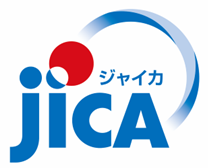研究成果
Discovery of New Drought Stress Response Mechanism in Plants
― Overcoming "invisible drought" and paving the way for improvement in crop yields―
Discovery of New Drought Stress Response Mechanism in Plants
―Overcoming "invisible drought" and paving the way for improvement in crop yields―
|
Main Points
|
Overview
A research team from JIRCAS, Kyoto University, Nagoya University, RIKEN, the University of Tokyo, and the National Agriculture and Food Research Organization (NARO) has discovered for the first time in the world that phosphate level within the plants decreases and triggers a phosphate starvation response at very early stages of drought, when leaf wilting is not observed.
Among various environmental factors such as abnormal temperatures, salinity and pests, drought is the most severe environmental stress causing significant damage to crop production. Not only does visible wilting from drought cause damage, but even mild drought, where leaves do not wilt, can cause extensive damage, reducing yields by half. However, understanding how plants actually respond to this "invisible drought" in real field conditions has remained elusive, not only because of the complex changes in field environments, but also because drought tests cannot be conducted when there is sufficient rainfall.
To artificially induce mild and persistent drought, the research team developed an experimental system using ridges, which raise the soil in the field to improve drainage and mimic mild drought stress in the field - a method not previously used in drought research. Over six years of field trials, the ridges were used to induce stable drought, even under annually changing environmental conditions. Comprehensive analyses of soybean in the field using this experimental system showed that in early drought at the level where leaves do not wilt, phosphate levels in the plant decrease before the previously known abscisic acid (ABA) response occurs, and a phosphate starvation response is triggered in the plant. Laboratory analysis using Arabidopsis thaliana revealed that key genes associated with the phosphate starvation response play a critical role in plant growth during the early stages of drought.
The results of this study have made it possible to quantitatively determine the level of plant response to "invisible drought" in the early stages of drought. This breakthrough paves the way for the development of innovative technologies to optimise water supply before crop yields are affected by drought. Consequently, the development of the experimental ridge drought system and the discovery of the phosphate starvation response as an indicator to capture 'invisible drought' in this study are expected to contribute to improving food security in the future.
The research results have been published in the online edition of Nature Communications, an international scientific journal, on August 19, 2023 (Japan time).
Publication
- Authors
- Nagatoshi, Y., Ikazaki, K., Kobayashi, Y., Mizuno, N., Sugita, R., Takebayashi, Y., Kojima, M., Sakakibara, H., Kobayashi, N.I., Tanoi, K., Fujii, K., Baba, J., Ogiso-Tanaka, E., Ishimoto, M., Yasui, Y., Oya, T. Fujita, Y.
- Title
- Phosphate starvation response precedes abscisic acid response under progressive mild drought in plants
- Journal
- Nature Communications
DOI : https://doi.org/10.1038/s41467-023-40773-1
For Inquiries
JIRCAS President KOYAMA Osamu
- Program Director:
- NAKASHIMA Kazuo (Food Program)
- Principal Investigators:
- NAGATOSHI Yukari (Senior Researcher, Biological Resources and Post-harvest Division)
FUJITA Yasunari (Project Leader, Biological Resources and Post-harvest Division) - Press Coordinator:
- OMORI Keisuke (Head, Information and Public Relations Office)
Press e-mail:koho-jircas@ml.affrc.go.jp
Figure 1. Use of ridges to artificially induce drought stress in the field
By using 30 cm ridges, soil moisture in the ridge area is reduced compared to the normal area, resulting in a noticeable reduction in soybean growth and yield. The figure on the left shows soybean growth 56 days after planting. Information from soil moisture sensors installed in the test plots is stored in a recorder in a white box via a black cable to monitor soil moisture in the test plots over time. The figure to the right shows the soybeans grown in each test plot at harvest and the soybean seed harvested. In this case, the soybean yield is still about half of the original yield. Even an "invisible drought" that does not cause wilting can cause significant damage to crop production. The experiment was conducted in Tsukuba City, Ibaraki Prefecture.
Figure 2. Elucidating drought stress response mechanisms in the field by combining field and laboratory experiments, model crops, and model experimental plants
New insights have been gained through "field to lab" research, which combines soybean, a major crop, and Arabidopsis thaliana, a model experimental plant, with laboratory and field research to verify in detail phenomena observed in the field in the laboratory.
Figure 3. Demonstrating phosphate starvation response in the early stages of drought stress
In this study, we found that, in very early drought, before the previously known ABA response occurs, when there is no leaf wilting, the phosphate level in plants decreased, triggering a phosphate starvation response. Our research provides a new model for understanding drought stress responses in plants.









